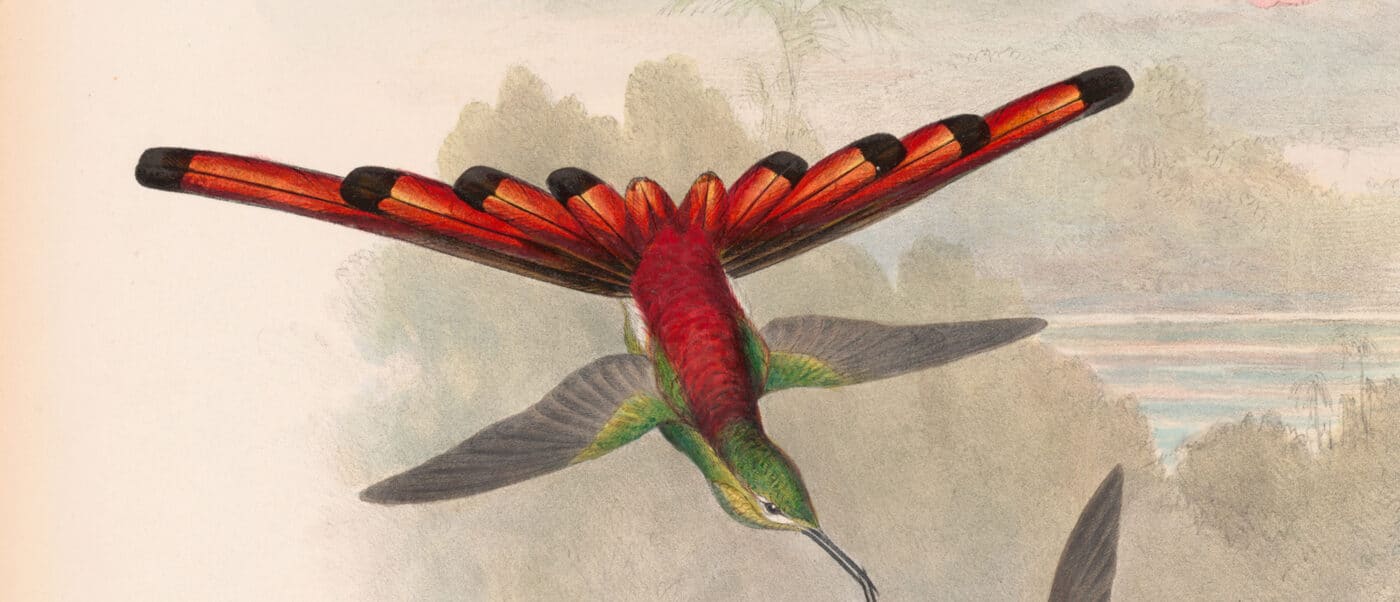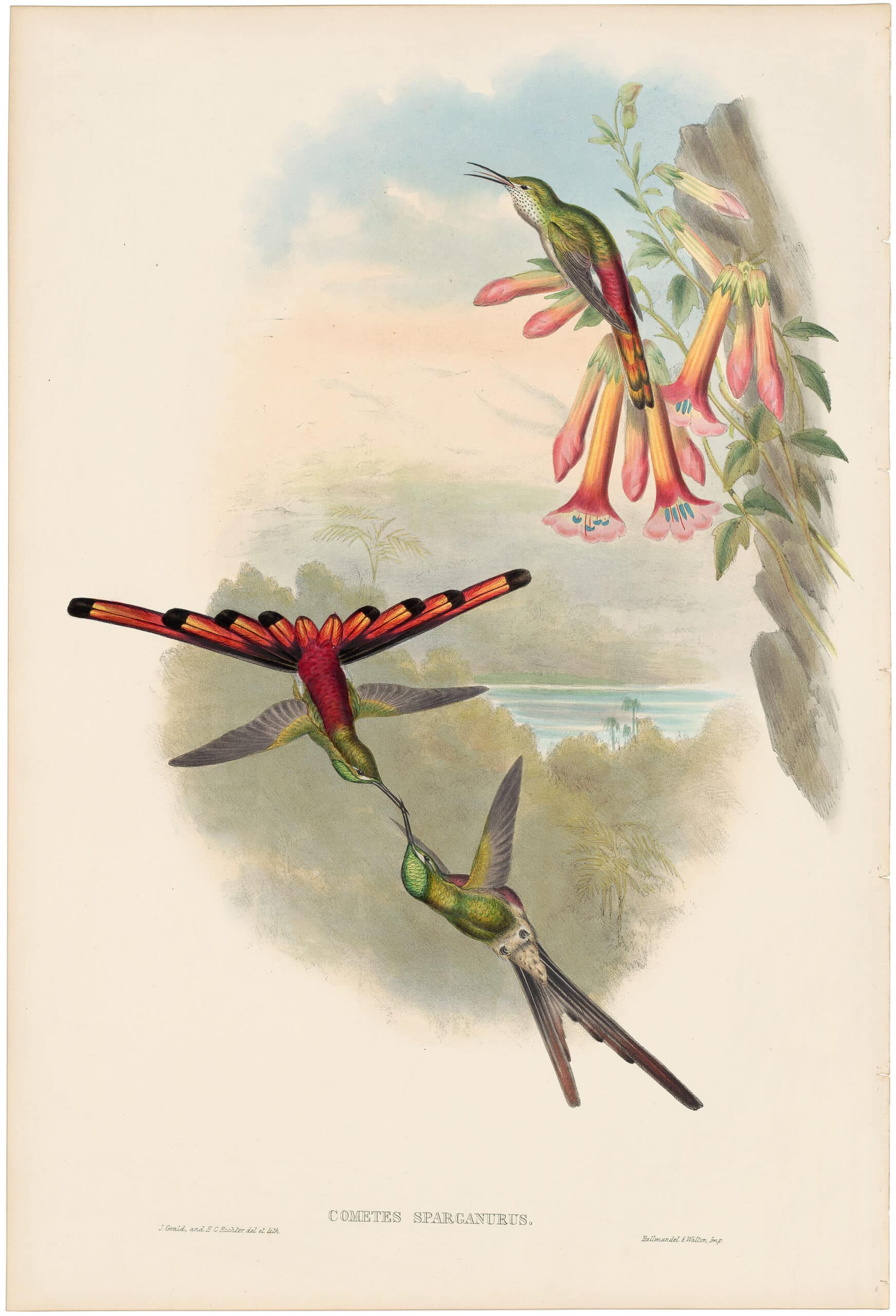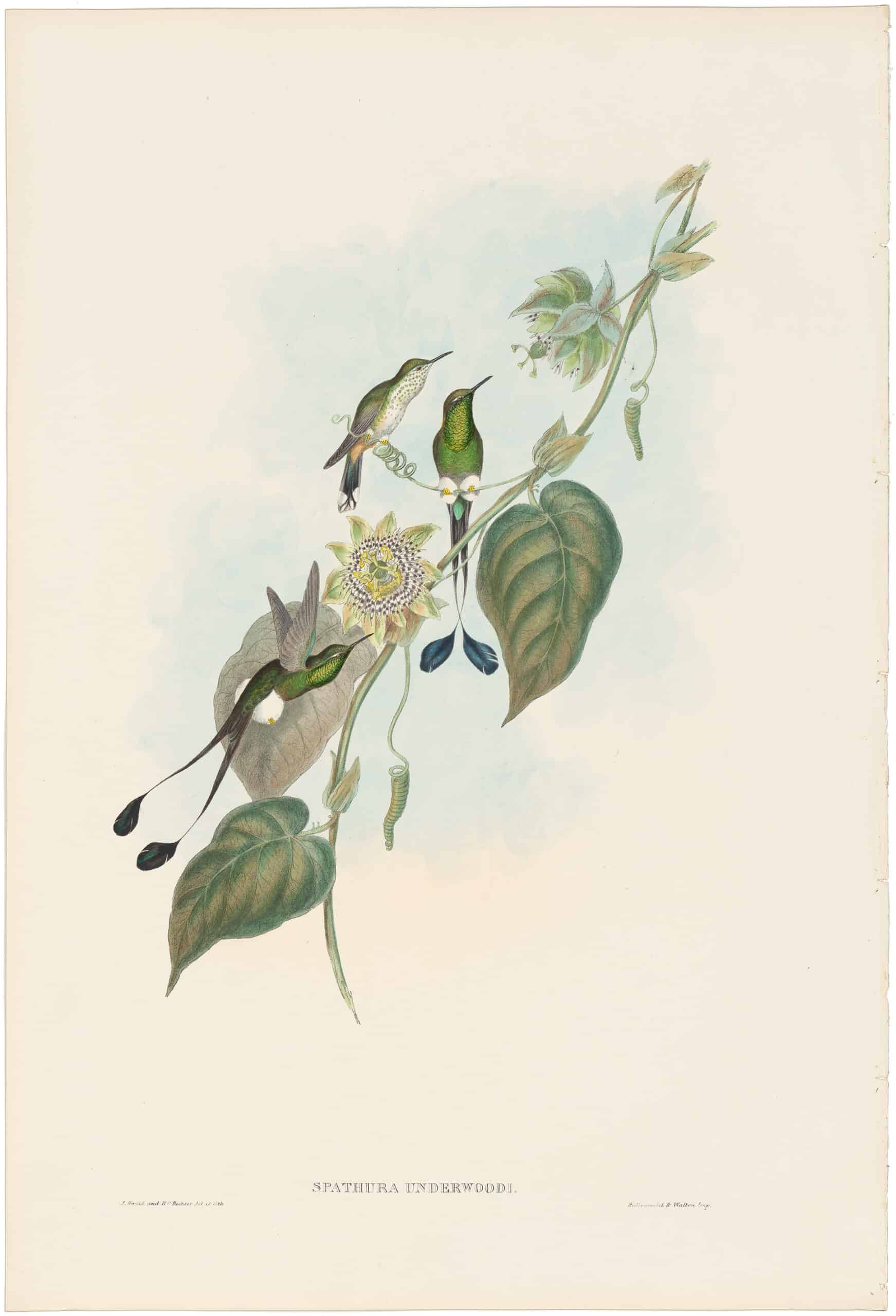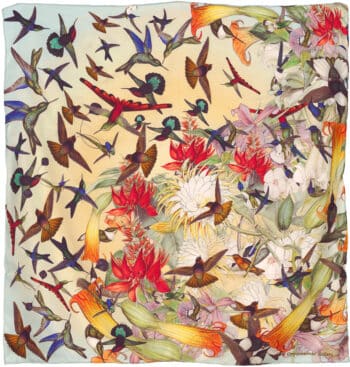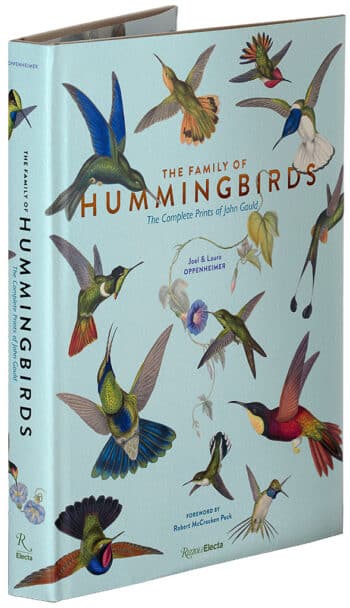Birds and Animal Art
John Gould’s Family of Hummingbirds Lithographs
John Gould’s monograph The Family of Hummingbirds is considered the crowning achievement of his illustrious career and a vibrant monument to these delightful species.
Table of contents
Created between 1849 and 1861 in England, Gould’s folio contained 360 hand-colored lithographs – some with gold leaf underlay – depicting all the hummingbird species known at the time. Gould’s illustrations of these tiny, vibrant, jewel-like birds captivated the European audience and fueled the collecting craze for natural history ephemera that ravished Victorian England and much of Western Europe. Gould’s magnificent folio, The Family of Hummingbirds, is remarkable for its attentive details, harmonious compositions, technical innovations, and vast subject matter.
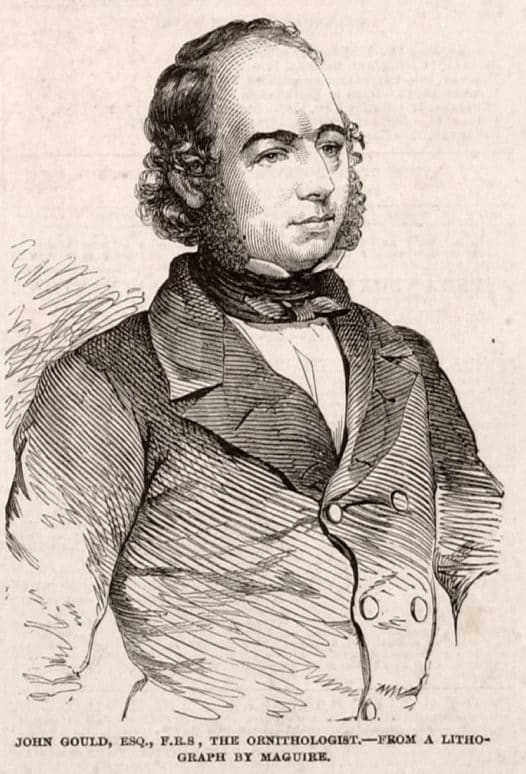
John Gould’s Upbringing
Born in Dorset in 1804 to a working-class family, John Gould received no formal training in the arts but instead spent his younger years learning his father’s gardening trade. While Gould was still young, his father secured a gardening position at Windsor Castle where, in addition to gardening, 14-year-old Gould learned the art of taxidermy and egg-blowing. Several years later with this specialized knowledge in tow, Gould opened a taxidermy shop in London where his services were sought by the likes of King George IV – whose giraffe Gould famously preserved. However, as an ambitious polymath, Gould quickly branched out to begin orchestrating the production of illustrated natural history folios including the Birds of Australia, Birds of Europe, Birds of Great Britain, Birds of Asia, Family of Toucans, Family of Hummingbirds, and more.
The Victorian Collecting Frenzy
Gould’s interest in natural science was not unique, in fact, the whole of Western Europe had developed a romance with natural history. Collecting frenzies such as Pteridomania – the Victorian craze for ferns – ran rampant throughout England and France. Likewise, conchology, or the study and collecting of shells, permeated the masses. The same can be said for many other aspects of the natural world – rocks, birds, taxidermied animals – all of which could be found in private cabinets of curiosity, burgeoning museum collections, and stately menageries. As empires expanded, trade networks were forged, and new territories were brought under the colonial shroud, so too exotic plants, animals, and organic specimens were introduced to the Victorian public.

Domenico Remps, Cabinet of Curiosities, 1690s. Oil on canvas, 39 x 54 in. Florence, Opificio delle Pietre Dure, Florence
As a result of this widespread interest in natural history, Gould’s illustrated folios were massively popular with the Family of Hummingbirds being no exception. Produced towards the end of his career, this folio was decades in the making and involved a sizable network of highly skilled illustrators, lithographers, colorists, and printmakers whom Gould employed to bring his vision to fruition.
Gould’s Hummingbirds, Pl. 174, The Sappho Comet
Antique hand-colored lithograph with gold leaf underlay, 1849 – 1861
View ArtworkGould Hummingbirds, Pl. 162, White-booted Racket-tail
Antique hand-colored lithograph, 1849 – 1861
View artwork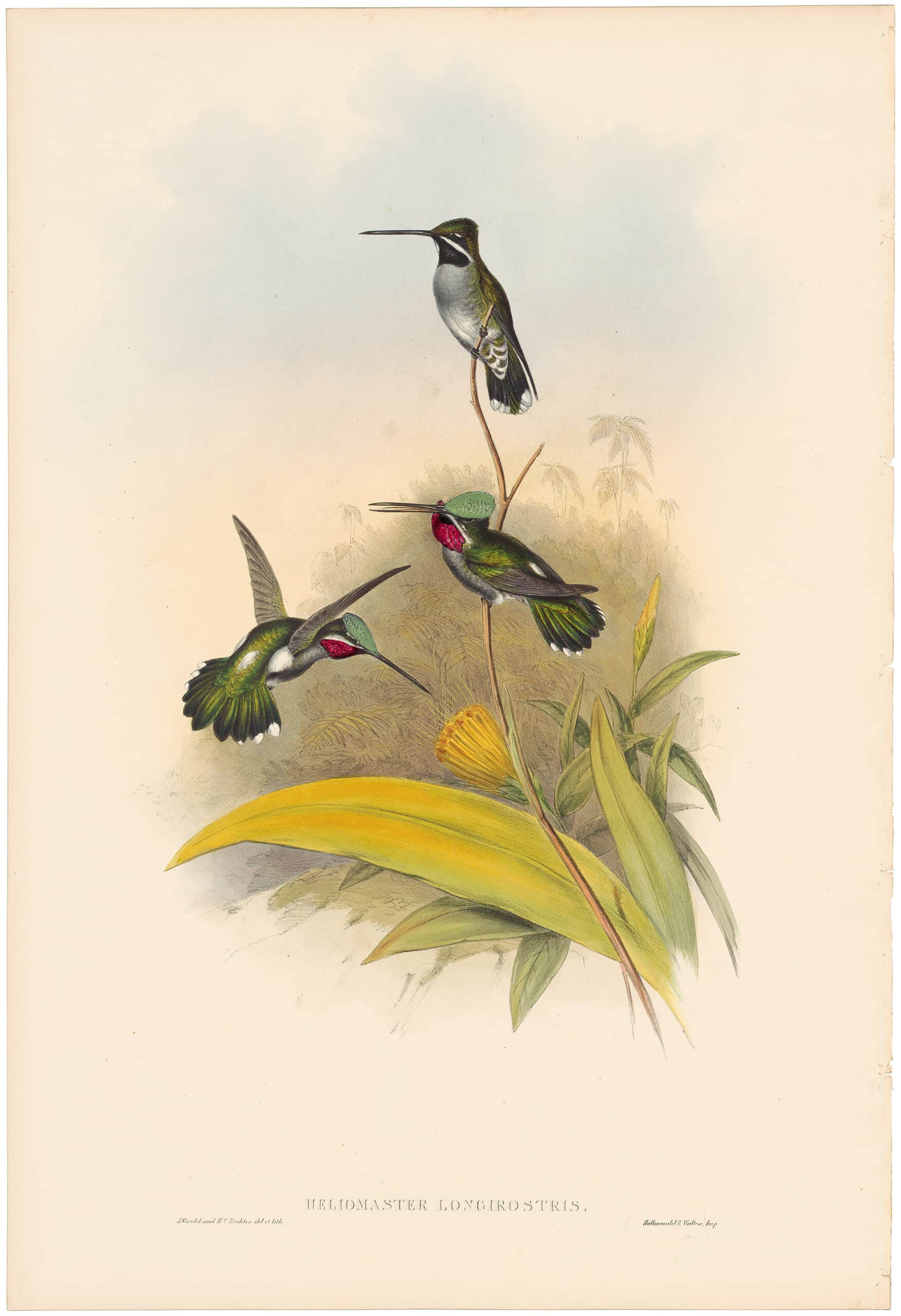
Gould Hummingbirds, Pl. 259, Long-billed Star-throat
Antique hand-colored lithograph, 1849 – 1861
View ArtworkMaking The Family of Hummingbirds
Gould’s production process began with the collection of specimens brought back from the Americas by explorers and merchants. He then arranged and sketched the specimens before passing his drafts on to his illustrators – one of whom was his skillful wife Elizabeth – who then fleshed out the compositions. The compositions typically capture two or three hummingbirds framed by a native floral element or atmospheric backdrop. His artwork focuses on the delicate birds’ form, color, pattern, and movement as they fly through the air or sit momentarily at rest on a nearby branch. Once the sketch was finalized, the illustration was then transferred to the lithography stone for printing.

A preliminary hummingbird sketch drawn on tissue
Once the drawings were transferred to the lithography stones, the stones were wetted, inked, and printed. The result was a black-and-white lithograph of the desired composition. Next, watercolor was hand-applied to bring the birds to life. In many cases, a gold leaf underlay was applied to select areas of the hummingbirds before the coloring process to capture the shimmering, jewel-like iridescence of the bird’s plumage.
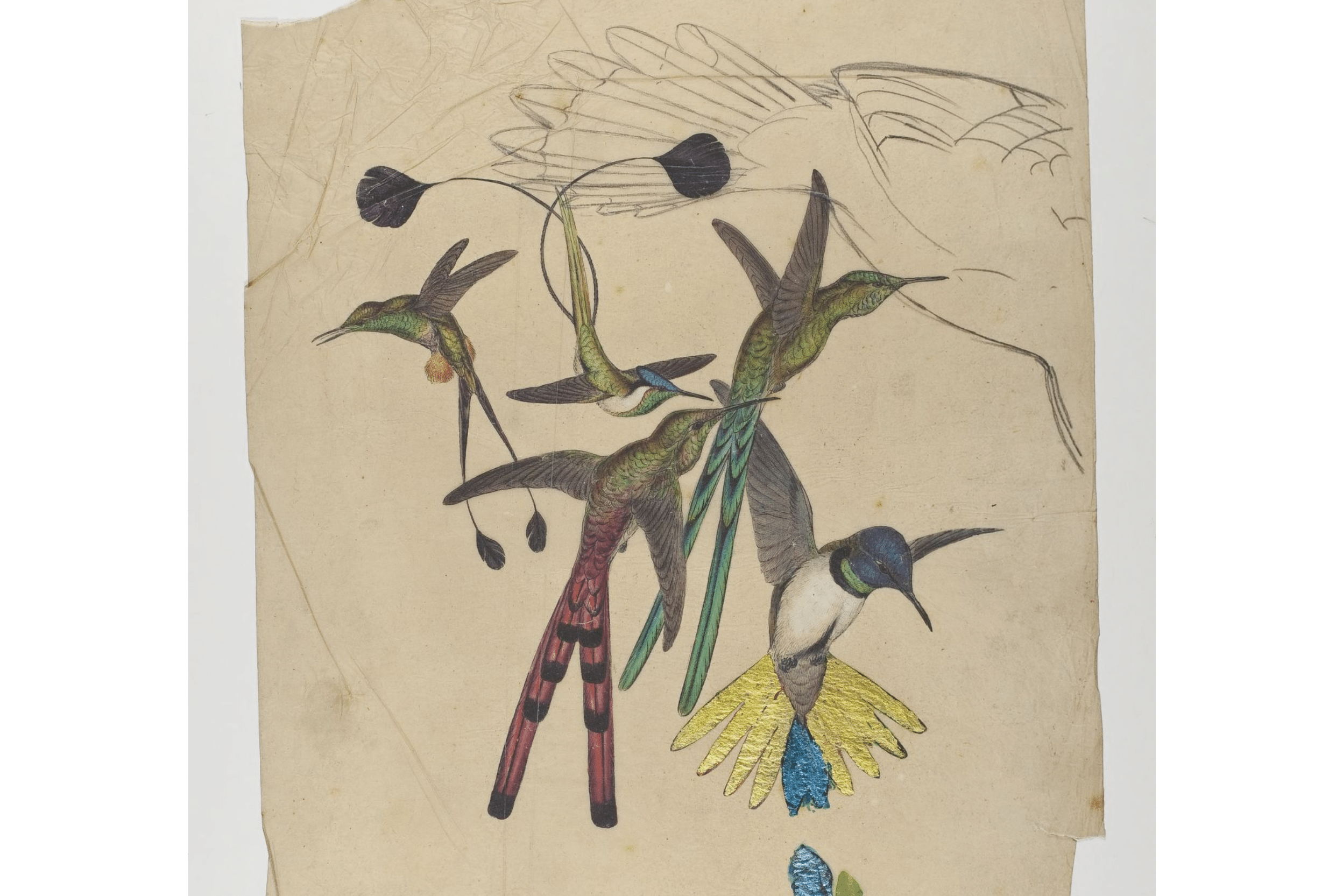
Experimental hand-colored color lithograph on tissue with gold leaf added to one hummingbird’s tail.
In fact, Gould developed and patented a specialized technique for the gold leafing process that he debuted alongside the initial plates of the hummingbird folio at the Great Exhibition of 1851 in London. Alongside his hand-colored lithographs, Gould exhibited a collection of hummingbird specimens which effectively drew in a crowd – many of whom had never seen the exotic species before. This event and Gould’s connection to the Zoological Society of London gained many subscribers to his folio.
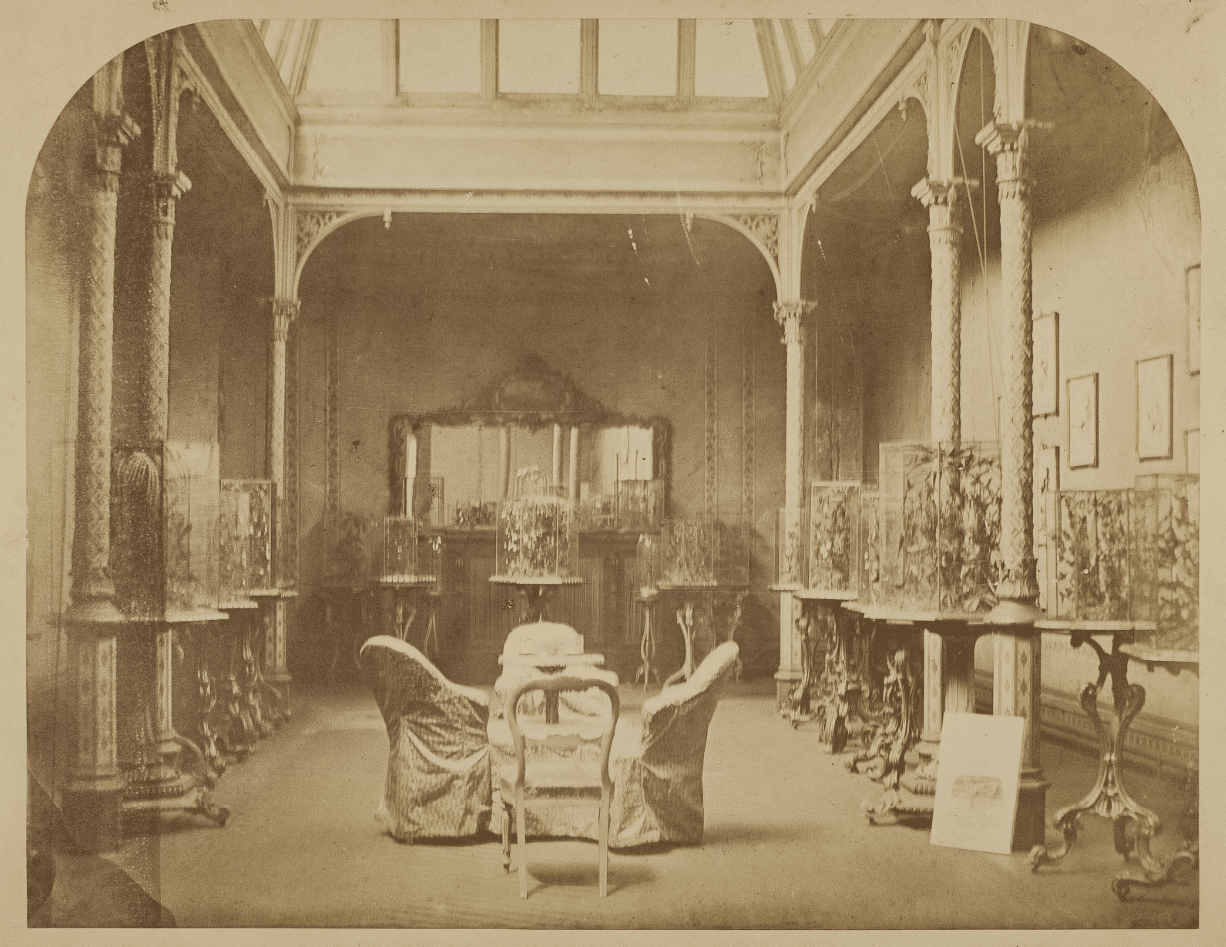
Gould’s taxidermied hummingbird specimens in glass display cases
Issuing the Folio
The Family of Hummingbirds was issued in parts to subscribers from 1849 and 1861. It was then up to the recipient to compile the prints into a bound folio or to leave them in unbound parts. Over 100,000 prints of the 360 plates depicting unique hummingbird species were issued during this time. After Gould’s death, an additional 58 plates were issued from 1880 to 1887 under the supervision of Gould’s collaborator Richard Bowdler Sharp. These 58 plates are known as the Supplement. While there are several artistic precedents to Gould’s Family of Hummingbirds publication, none depict these species with the same attention to detail, ingenuity of process, and breadth of subject matter as demonstrated by Gould.
References
Oppenheimer, Joel and Laura. The Family of Hummingbirds: The Complete Prints of John Gould. New York: Rizzoli Electa, 2018.
Gates, Barbara T. “Introduction: Why Victorian Natural History?” Victorian Literature and Culture 35, no. 2 (2007): 539–49. http://www.jstor.org/stable/40347173.

